Nazalus Implants
Increase AP spread
by
Engaging the nasal wall
Nazalus Implants
Increase AP spread
by
Engaging the nasal wall
Nazalus Implants
Increase AP spread
by
Engaging the nasal wall
The Nazalus Implant Solution
In the severely resorbed maxilla, Zygomatic implants can be used to make use of the zygomatic bone. Similarly, Nazalus implants enable the use of the maxillary bone surrounding the nose.
The implant site begins in the alveolar bone in the premolar area and ends in the bone separating the maxillary sinus and nasal cavity. Southern’s Nazalus implants are specifically designed to overcome the challenges with this procedure by ranging in extra-long lengths to span across the sinus.
The Co-Axis® feature allows a 24° prosthetic angulation correction at subcrestal level ensuring that the prosthetic angle is not compromised whilst increasing AP spread.
–
External Hex
Connection
Known for its ease
of use and long history
of clinical success
–
3 mm MSC Section
Decreases bacterial
adhesion and risk of
peri-implantitis
–
Increase Patient Acceptance
Nazalus protocol leads
to higher patient acceptance
and less bone graft procedures
–

–
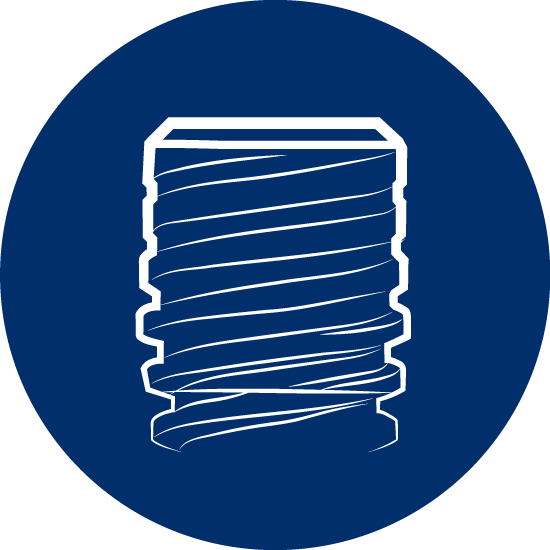
–

–
–
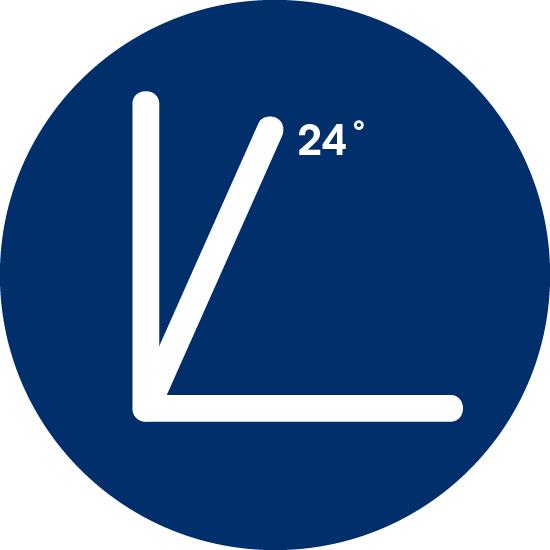
–
–
High Strength
Titanium
Enables exceptional
fatigue strength
functionality
–
24° Platform Corrections
Allow optimal
use of available
bone
–
SInergy
Surface
Alumina-blasted surface
with over 20 years
of clinical results

External Hex Connection
Known for its ease of use
and long history of clinical success

3 mm MSC Section
Decreases bacterial
adhesion and risk of
peri-implantitis

Increase Patient Acceptance
Nazalus protocol leads to
higher patient acceptance and less bone graft procedures
High Strength Titanium
Enables exceptional
fatigue strength
functionality

24° Platform Corrections
Allow optimal use of available bone
SInergy Surface
Alumina-blasted surface with over 20 years of clinical results
Technical Facts
- Available in lengths ranging from 20-24 mm
- Available in ⌀4 mm diameter
- Co-Axis® enabled: available in a 24° angulation
- Available with a MSC (Machined Surface Coronal) hybrid surface
- SInergy surface: Surface roughened by alumina-blasting giving a moderately rough surface with over 20 years of evidence of clinical success
- Pure high strength grade 4 titanium enables exceptional fatigue strength (>920 MPa)
Surgical Benefits
- Engage the lateral nasal wall without compromising prosthetic angulation
- Co-Axis® enabled: available in a 12° angulation variation
- Available with a MSC (Machined Surface Coronal) hybrid surface for easier coronal debridement
- Minimal instrumentation is required
- SInergy moderately rough surface with over 20 years of clinical research showing consistently excellent results
- Pure high strength titanium enables exceptional fatigue strength (>920 MPa)
Prosthetic Benefits
- Classic, trusted connections with sought-after modern features
- Forgiving interface for implant divergence
- Widest range of prosthetic options for treatment of single tooth, partial or full edentulism
- Built-in platform shift
Surgical Placement
Step 1: Initiate the osteotomy
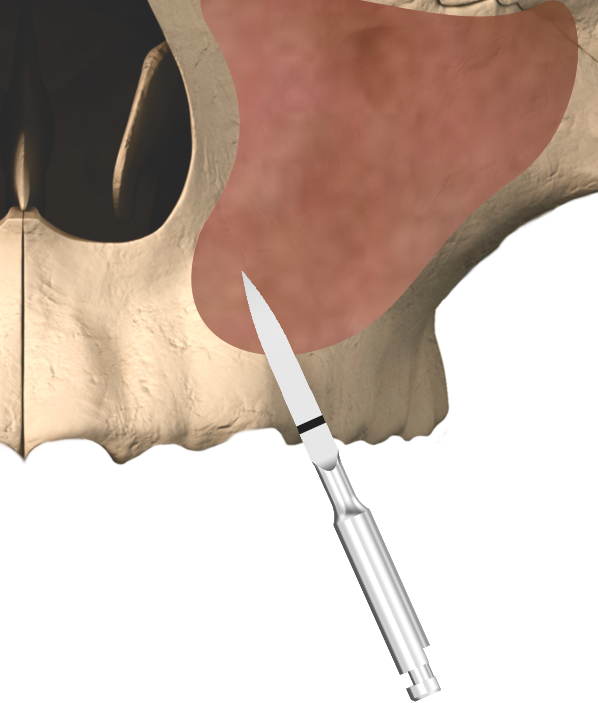
Step 2: Pilot drilling – Ø2 mm twist drill
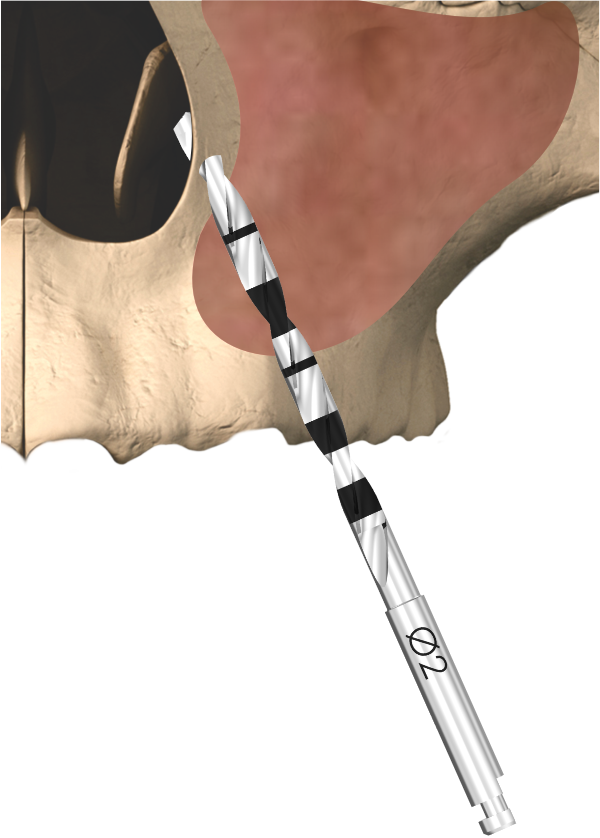
Step 3: Check alignment
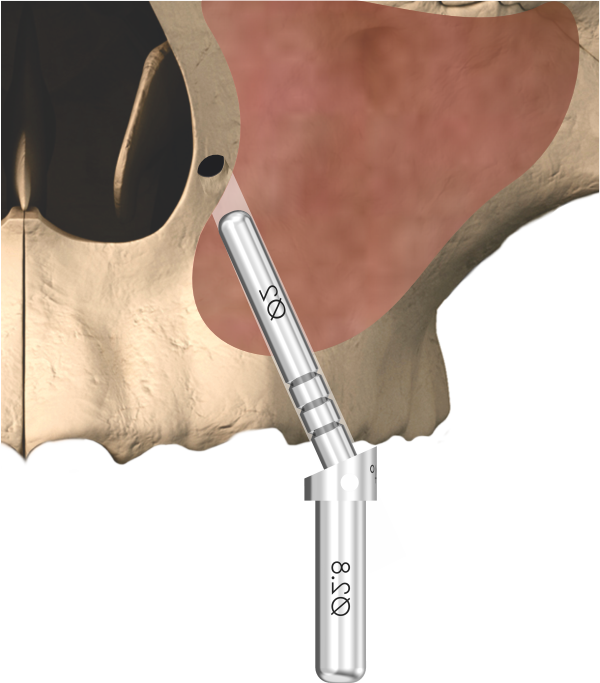
Step 4: Depth gauge – implant length selection
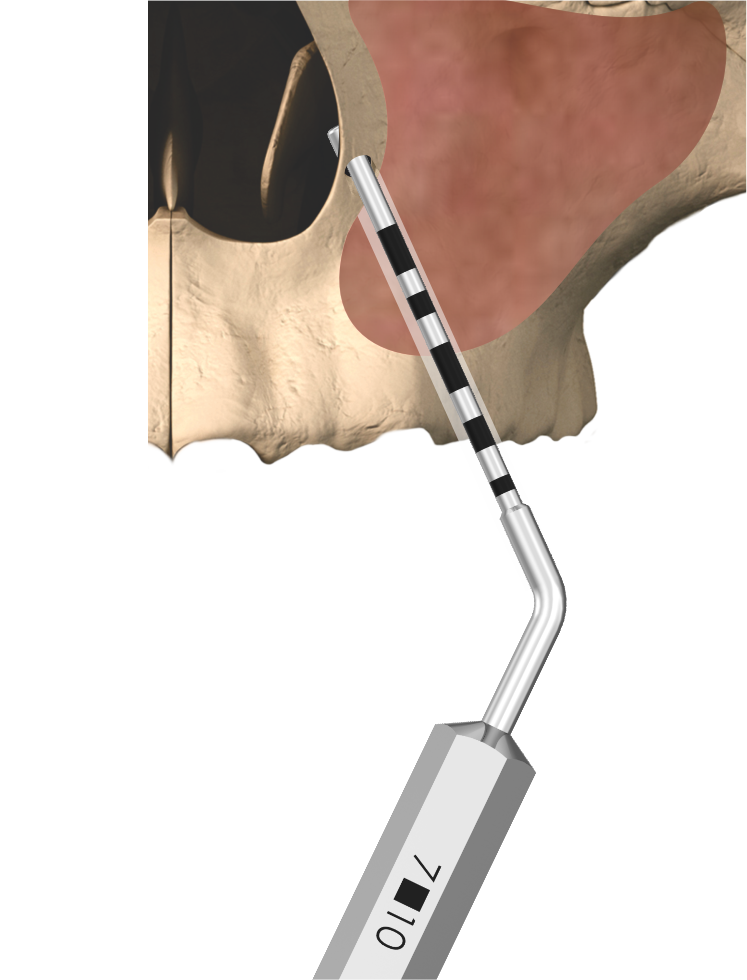
Step 5: Enlarge the osteotomy – final drill
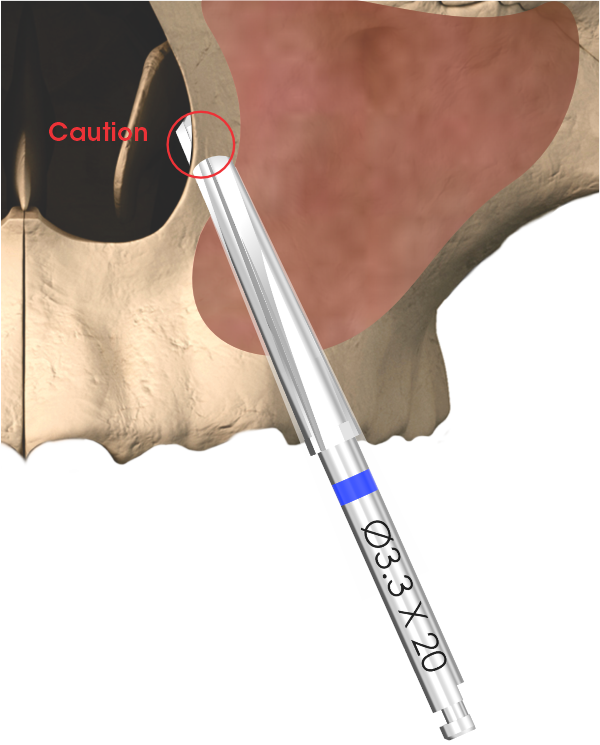
Step 6: Implant placement – implant mount
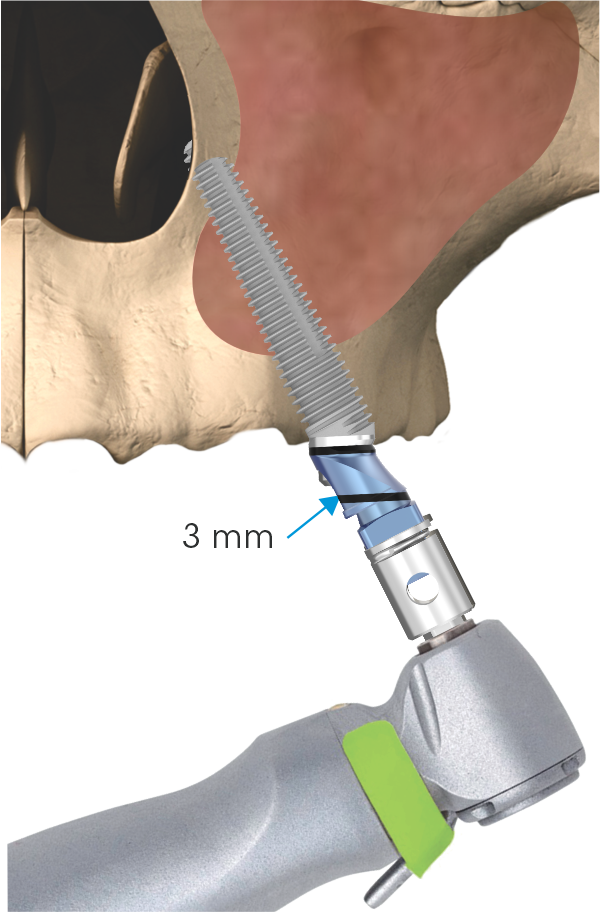
Step 7: Fully seat the implant
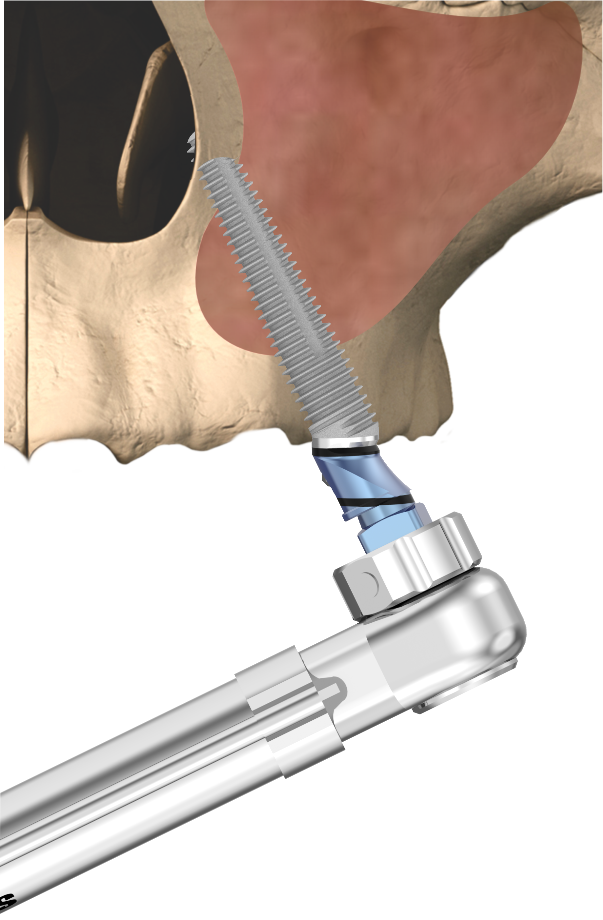
Step 8: Remove the fixture mount
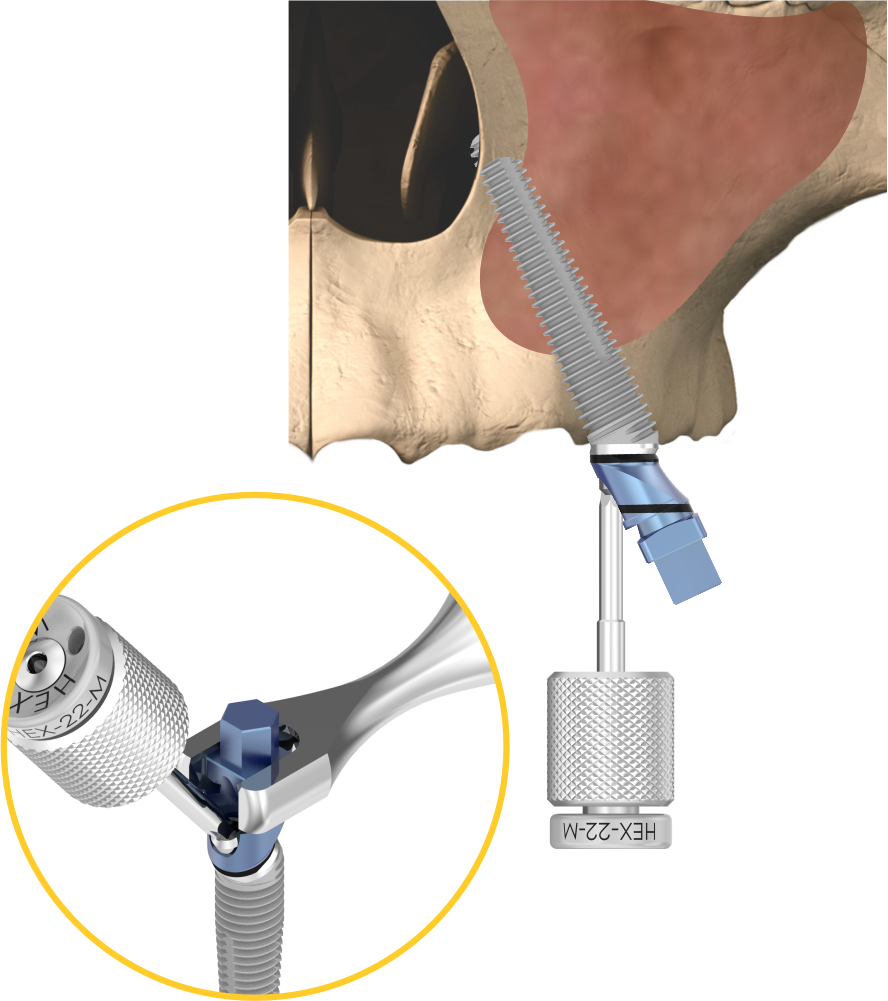
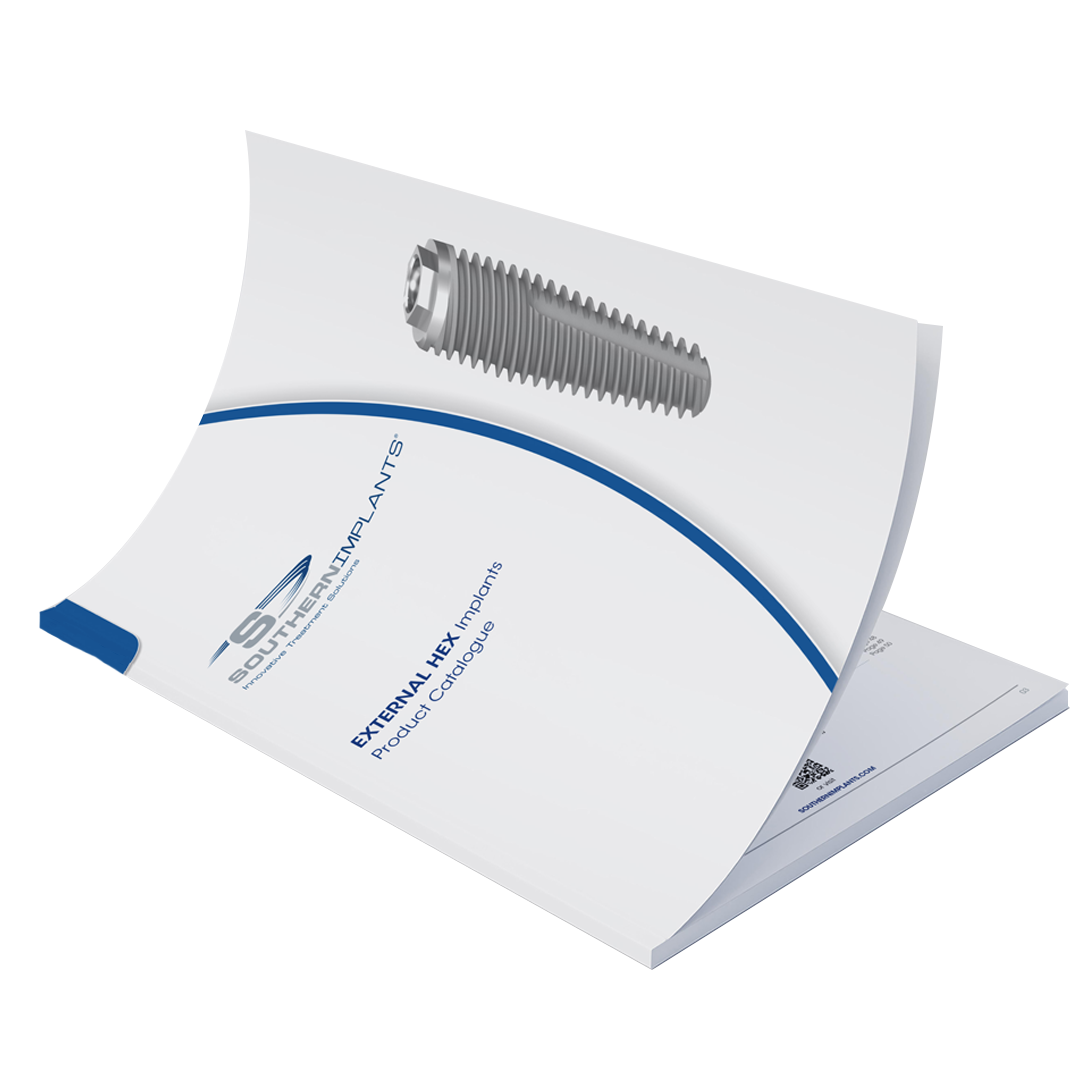
Catalogues and Brochures
Instructions For Use (IFU)
References
Zaninovich, M., 2020. Clinical guidelines for rehabilitation of the severely atrophic maxilla using extended-length subcrestal angulated implants and modified trans-sinus nasal protocol: A case report. International Journal of Oral Implantology, 13(3), pp.291-98.
Vandeweghe S, Hawker P, De Bruyn H. An Up to 12-Year Retrospective Follow-Up on Immediately Loaded, Surface-Modified Implants in the Edentulous Mandible. Clin Implant Dent Relat Res. 2016 Apr;18(2):323-31.
Vandeweghe S, Ferreira D, Vermeersch L, Mariën M, De Bruyn H. Long-term retrospective follow-up of turned and moderately rough implants in the edentulous jaw. Clin Oral Implants Res. 2016 Apr;27(4):421-6.
